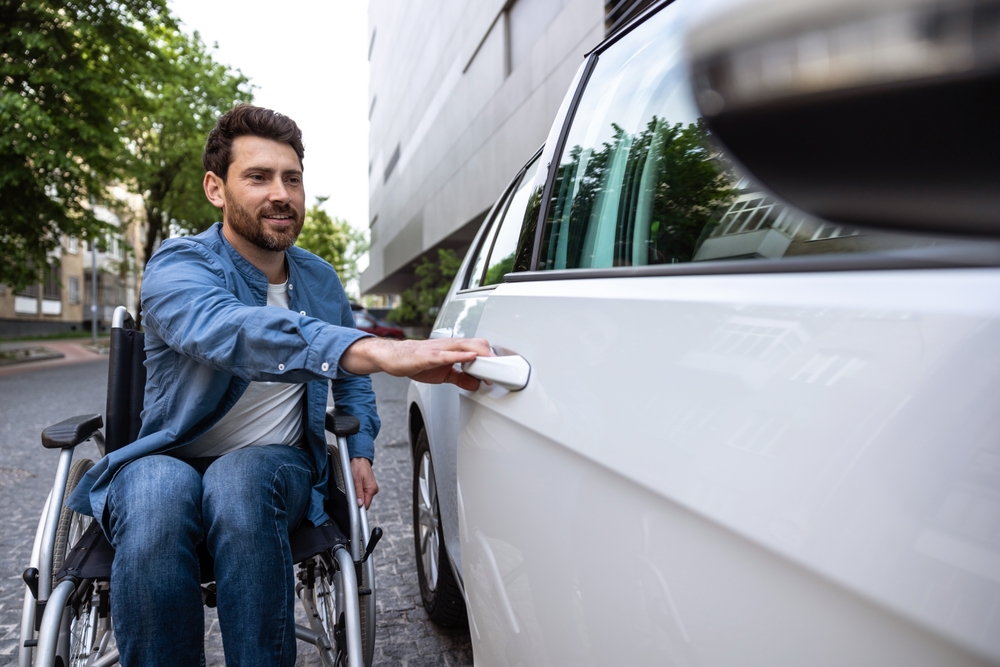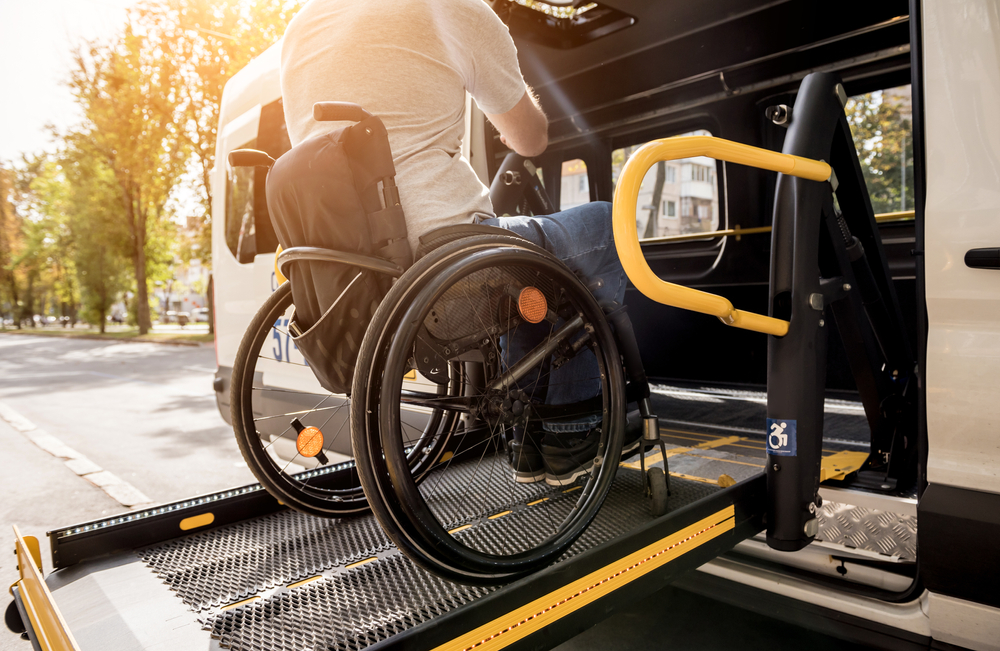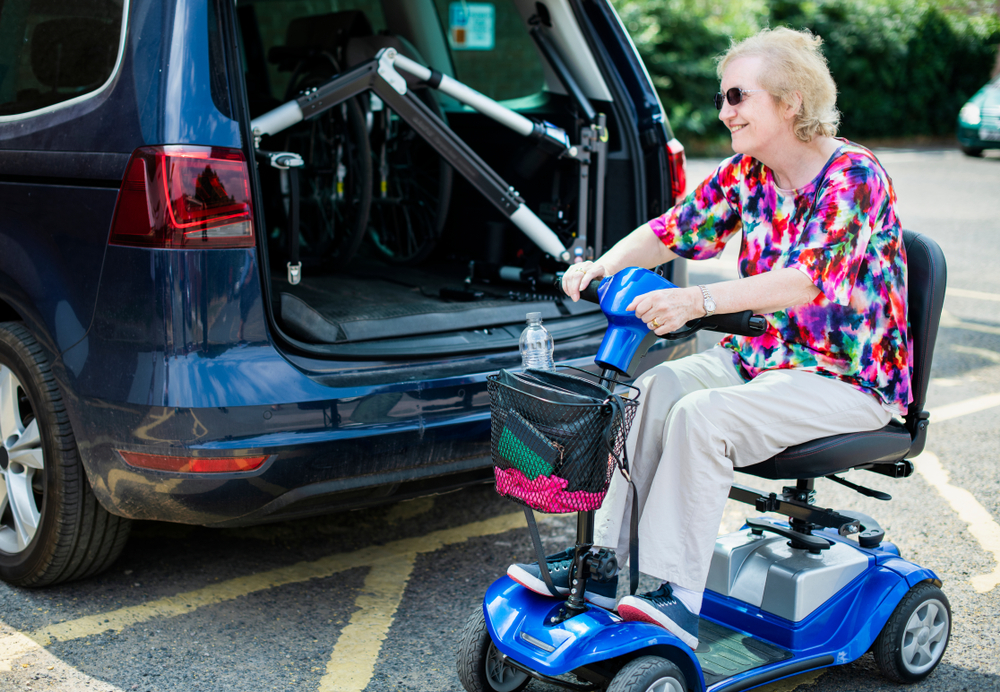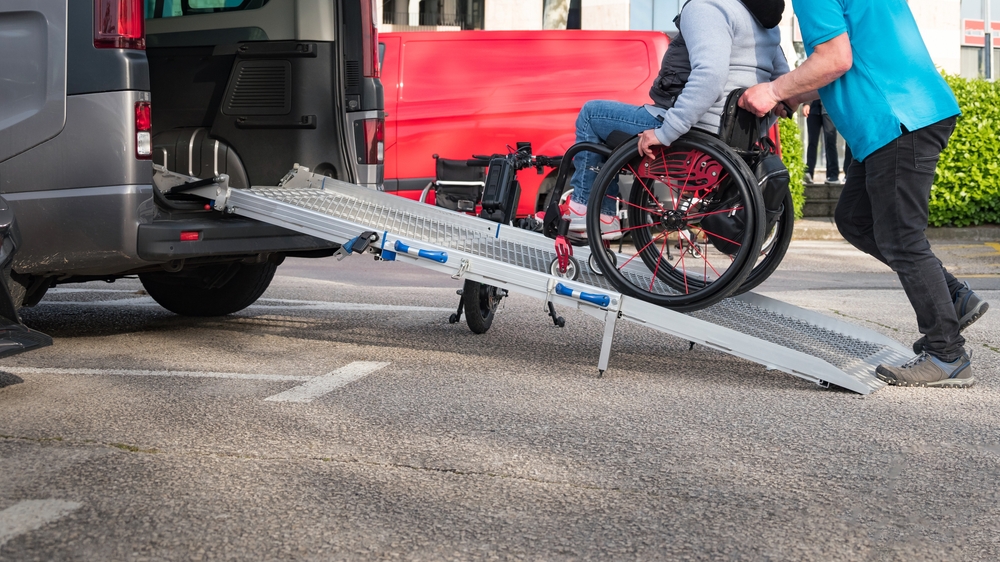Make an Appointment
Can OTs help you get back on the road safely after disability or injury?
Absolutely! Occupational therapists specialise in helping people overcome barriers to independence, including through vehicle access and modification planning.
This blog explores how occupational therapy (OT) contributes to car modifications for people with disabilities. It outlines NDIS funding eligibility, popular vehicle changes, and the OT driving assessment process in Australia.
Driving can be one of the most powerful ways to regain independence after an injury, illness, or diagnosis. For many people living with disability, car modifications (custom changes to a vehicle) can make safe driving or passenger travel possible again. Occupational therapists play a vital role in assessing individual needs and recommending the right modifications to support functional, safe, and legal vehicle use.
In this article, we’ll break down how OTs support clients through this process, which modifications are commonly used and funded by the NDIS, and what to expect from an OT driving assessment.

Does NDIS Cover Car Modifications?
Yes, the NDIS can fund car modifications if they’re considered reasonable and necessary for the participant’s mobility and independence. Funding is typically available under the Assistive Technology budget, but there are specific eligibility criteria and documentation requirements.
Common NDIS-funded car modifications include:
- Wheelchair hoists or ramps
- Hand controls for braking and acceleration
- Spinner knobs or modified steering aids
- Automated door openers or remote entry
- Modified seating (swivelling seats, custom cushions)
Before funding is approved, a qualified OT must complete a comprehensive vehicle modification assessment. This ensures the request aligns with the participant’s goals and daily activities. In many cases, participants may also need a medical clearance and input from a certified driving instructor.
Additional considerations for NDIS funding:
- The participant must demonstrate that public transport or taxis are not viable options.
- Modifications must represent value for money.
- Vehicles typically must be under 5 years old and in good condition.
- A quote from a registered vehicle modifier is usually required.
NDIS funding does not cover regular car servicing, insurance, or general repairs. However, in rare cases, it may contribute to vehicle replacement if the modified car becomes unsuitable or unsafe.
OTs also assist by:
- Writing detailed justification letters for funding applications
- Liaising with plan managers and support coordinators
- Supporting trial appointments with vehicle modification suppliers
NDIS plans that include a transportation goal, particularly under 'Improved Daily Living' or 'Increased Social and Community Participation', may be more likely to secure support for a vehicle modification.
Learn more via the NDIS Operational Guidelines on Vehicle Modifications.

What Modifications Can You Do to a Car?
Vehicle modifications can range from simple ergonomic tweaks to complex structural changes. The key is that they are tailored to the driver’s physical capacity, cognitive function, and vehicle type.
Examples include:
- Driver controls: Hand-operated brakes, left-foot accelerators, joystick steering
- Seating modifications: Swivel seats, lowered floor areas, harnesses
- Access aids: Wheelchair hoists, roof lifters, ramps, transfer boards
- Interior changes: Relocating dash controls, voice-activated systems
- Safety systems: Rear-view cameras, extended mirrors, collision sensors
Specialised technologies are available for different disability profiles:
- Spinal cord injuries: Drive-by-wire or joystick controls
- Amputees: Pedal modifications and single-arm steering
- Cerebral palsy: Adapted seating and headrest-based controls
Modifications can also be aimed at comfort and convenience, such as installing noise reduction panels for sensory sensitivity or ventilated seats for temperature regulation issues.
Combination systems are increasingly popular, offering more than one assistive feature integrated into the same vehicle. For example:
- A swivel seat combined with a sliding door and a manual hoist
- Hand controls paired with custom steering aids and pedal guards
All modifications must:
- Comply with Australian Design Rules (ADR)
- Be approved by a qualified OT and certified vehicle modifier
- Pass engineering and roadworthiness tests post-installation
OTs work alongside certified vehicle modifiers to ensure each adaptation is safe, road-legal, and meets compliance requirements. A trial or simulation may be required before installation. In some cases, vehicle modifications must also be reported to state transport authorities for updates to licence conditions or vehicle registration.

What Are the Most Popular Car Modifications?
The most frequently used vehicle modifications for people with disability in Australia include:
- Hand controls: For people with limited or no leg function
- Left-foot accelerator: When right-leg use is compromised
- Spinner knob: Helps drivers with one functioning hand or reduced grip
- Hoists and lifters: For loading wheelchairs or scooters independently
- Low-effort steering systems: For drivers with upper-limb weakness
- Swivel seats: Simplify getting in and out of the vehicle
Other widely used options include:
- Automated tailgates: Useful for wheelchair users loading equipment
- Transfer turntables or powered platforms: Reduce physical strain
- Remote control keyless entry systems: Improve accessibility in parking lots
- Pedal extensions: For drivers with shorter stature or limited leg reach
Why these modifications are popular:
They target the most common barriers to independent vehicle use, including reduced limb function, fatigue, muscle weakness, chronic pain, and coordination difficulties. Their popularity is also due to their wide availability, versatility across vehicle models, and compatibility with NDIS funding streams.
Real-world use cases:
- A person with multiple sclerosis may use a low-effort steering wheel and pedal guard to improve safety and reduce fatigue.
- A stroke survivor may use hand controls and a spinner knob to regain driving independence with one hand.
- A parent with paraplegia may rely on a rear wheelchair hoist and custom driving seat to manage family transport.
Popular brands and devices in Australia include:
- Fadiel Italiana
- BraunAbility
- Freedom Motors Australia
- Space Drive (by Paravan)
Your OT will help match the most appropriate equipment to your individual needs, ensuring all adjustments work seamlessly together. Trial fittings and training are key to safe and confident use. Ongoing reviews may also be needed if your condition changes over time.

What Is the OT Driving Assessment in Australia?
The OT driving assessment is a structured process to determine whether a person can safely operate a vehicle and what supports they might need. It usually consists of two parts:
- Off-road assessment: Conducted at a clinic or office. The OT evaluates vision, reaction time, memory, attention, range of motion, and motor coordination.
- On-road assessment: Completed with a certified driving instructor in a dual-control car. The participant’s ability to follow directions, react to traffic, and control the vehicle is reviewed.
Additional elements of the assessment may include:
- Medical review and clearance
- Screening for neurological or sensory deficits
- Cognitive tests (e.g., Trail Making Test, Useful Field of View)
- Fatigue and pain assessments for people with chronic conditions
After the on-road component, the OT compiles a detailed report with recommendations for:
- Licence status or conditions (e.g. daylight driving only)
- Further rehab or retraining
- Need for specific vehicle modifications
- Suitability for NDIS funding support
Each Australian state or territory may have slight differences in licensing requirements. For example, VicRoads, Transport NSW, and the Department of Transport WA each have dedicated pathways for drivers with medical conditions or disabilities.
Assessments must be conducted by a driver-trained occupational therapist and are often required by licensing authorities or for insurance purposes. They can also be funded under the NDIS in some cases.

Frequently Asked Questions (FAQs)
Can I get NDIS funding for a driving assessment?
Yes. If the assessment is necessary to support your NDIS goals (e.g. increasing independence), funding may be available under Capacity Building supports.
How do I know if my car is suitable for modifications?
A qualified OT and vehicle modifier will assess your current vehicle to determine whether it's suitable or if a new one is needed.
What if I’m not able to drive, but still need car modifications?
The NDIS can fund vehicle modifications for passengers as well, including ramp access, customised seating, or transfer aids.
Do I need to retake my licence after a modification?
In some cases, yes. If your modifications significantly change how you control the vehicle, you may need a reassessment or conditional licence.
Are car modifications reversible if I change vehicles?
Some components, like hand controls or steering aids, can be transferred between vehicles. However, structural modifications like lowered floors are permanent.

Final Thoughts
Car modifications can be life-changing. With the right OT support and assistive technology, driving (or travelling) becomes safer, more comfortable, and more empowering.
Navigating the process can feel overwhelming—but you don’t have to do it alone. A qualified occupational therapist will guide you through assessments, NDIS funding, and custom vehicle recommendations.
Next Step
Call 1300 731 733 or book online for occupational therapy support tailored to car modifications and mobility planning.
You can also:
- Browse more disability and NDIS blogs
- Explore our Occupational Therapy Services
- Speak with your Support Coordinator about an OT referral
- Ask your GP about adding car modifications to your NDIS plan

Date Published: Tuesday, June 17, 2025
Need to get into direct contact with ur Client Services team? We're all ears. Call our team directly on 1300 731 733

